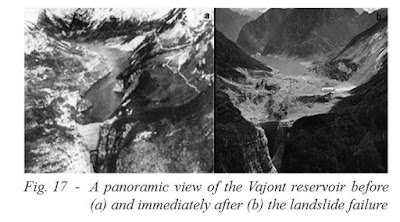Guten Morgen Leute,
letzte Monat habe Ich....sorry :) last month I participated in a joint
workshop of the University of Padova (ICEA www.dicea.unipd.it) and the Technical
University of Hamburg (https://www.tuhh.de/alt/gbt/homepage.html). The workshop
was held in Padova at the ICEA department.
I graduated from the University of Padova with a Bachelor Degree in
Civil Engineering and I worked on my bachelor thesis for 5 month in the ICEA
department under the supervision of Dr. Fabio Gabrieli (for the brave people,
here there is the link to the paper conference). I must say that was very nice and exiting to be back where I started my academic carrier and to present our project INFRASTAR.
 Beside the technical topic, I was very curious to meet other PhD students
from different environments. Plus I hoped for maybe
receiving some good advice on how to face different challenges from the older
PhDs :).
Beside the technical topic, I was very curious to meet other PhD students
from different environments. Plus I hoped for maybe
receiving some good advice on how to face different challenges from the older
PhDs :).
Prof. Paolo Simonini and Dr. Francesca Ceccato (hosts of this workshop) arranged
it in order to have theoretical session (the first two days) and excursion
filed sessions (the last two days).
Day 1:
The first day started in the late afternoon and was dedicated to the introduction of the 4 days workshop explaining the programs and with more information regarding the technical visits in the following days. |
| Prof. Simonini introducing the workshop schedule |
The evening couldn't be finished better with pizza and happy hour :)
Day 2:
 |
| Seminar of Prof. Grabe |
 |
| Dr. Gabrieli's presentation |
 |
| Group picture |
  |
| My presentation :) |
Day 3-4:
Excursion dayyyss!
 |
| Source: Deganutti and Trecca; the case study of Cancia, a mountain village treted by a Debris Flow; 2013 |
A part of the tehnical excursion was focused on the massive lanslide occured at the Vajont dam in the 1963 which caused a man-made megatsunami in the lake.
The dam is built across the valley excavated by the river Vajont. The
valley is high and narrow confined with the Toc mountain. The reservoir was
designed to contain 150 millions of cubic meter of water and the dam was (and
still is) 260 meter high. During the filling and subsequent lowing of water
level, a block of circa 270 million cubic meter from one wall of the Toc
mountain, sled into the lake at a velocity of 100 km/h, generating a wave of
250 meter height overtopping the dam and flooding the valley below destroying many villages and killing almost 2000 people. Surprisingly
the dam remained unbroken by the wave and landslide. The dynamic of the
landslide has been extensively and deeply investigated especially on the
landslide triggering, water interaction and wave generation.
The technical visit in Venice was at the MOSE. It is a project which
involved a series of mobile barriers for the defence from floods sealing the lagoon from the outer sea. As we know,
Venice is a city which rests on the surface of the sea, in the last 100 years
the city has sunk about 25 cm. With the increase of flood frequency and
intensity and the prediction of rising the sea level, the Lagoon area is at
risk of catastrophic events.
The barries are located on the three
entrance of the lagoon and are designed to separate the lagoon and the sea when
a flood is occuring. These gates are resting on the bottom of the sea bed
(invisible) during normal tidal
conditions and when it is necessary (case of high tide), compressed air is pump
inside the barriers causing them to rise up out of the sea and protecting the
Venice from the flood.
The goal of the MOSE project is not just the
defence from floods and sea storms but also has important activities regarding
the defence, recuperation and management of the environment. These activities
of protection and reconstruction of the lagoon habitats guarantee essential
ecological and hydrodynamic functions and ecosystem biodiversity.
This was a very fruitful exchange of information among young researchers
and interesting field visits. I wish the best of luck to all of them to accomplish their goals during their PhD carriers.






No comments:
Post a Comment